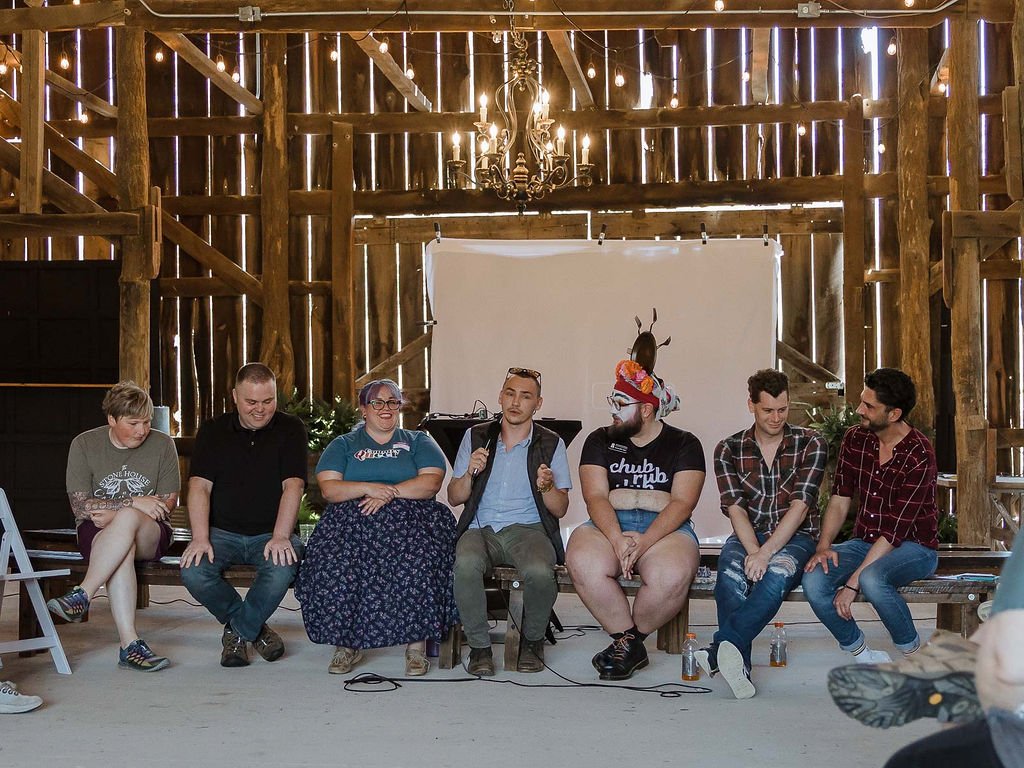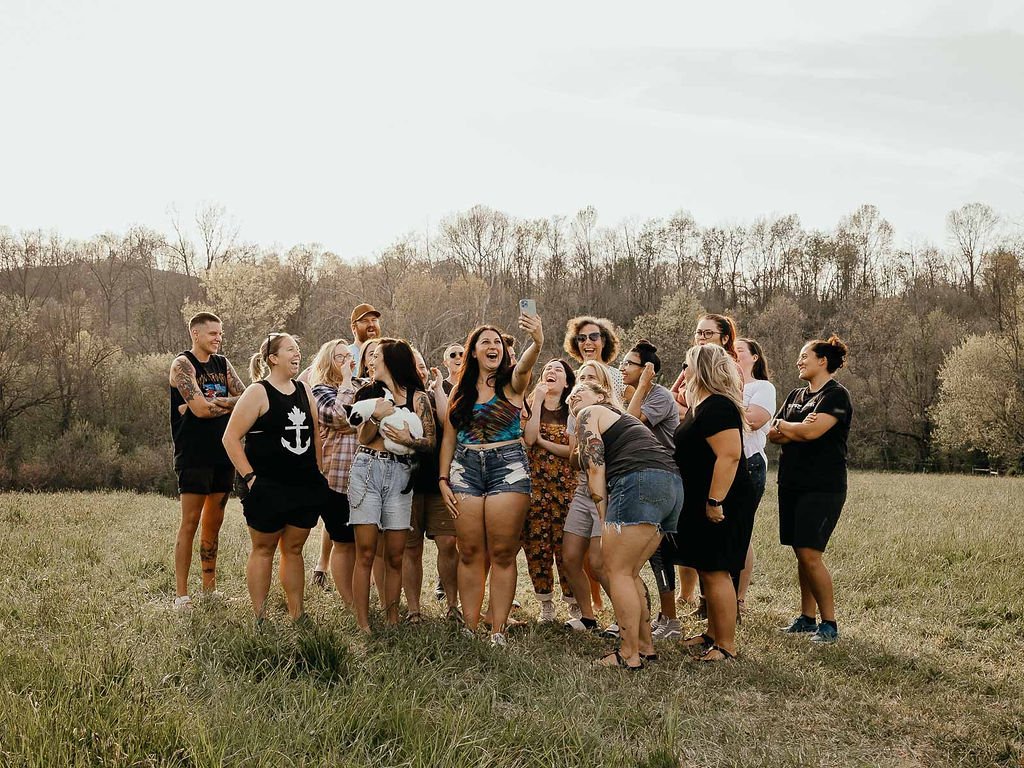Queers in the Country
Photographs by Roo Photographs
When a group of LGBTQ+ van lifers grew frustrated with the lack of welcoming spaces, they decided to take matters into their own hands by creating their own event to show what true inclusiveness looks like.
“I had lived the van life for just under a year and found that most events were overtly non-inclusive,” says Braidyn Browning (They/Them), who helped organize the Queers in the Country gathering. “The staff, attendees, programming, etc. all looked the same. Most of what I experienced at main stream events seemed tailored to cisgendered white people.”
Queers in the Country brought together LGBTQ+ van lifers from across the country for three days of community, learning and fun in Richmond, KY.
Megan Bloomer (She/Her) who hosted Queers in the Country at her 51-acre venue, The Stonehouse at Silver Creek, says it's no accident the gathering was held in Kentucky.
“The Queer community doesn’t feel safe outside large urban areas on the West Coast and the Northeast,“ she said. “Queer people don’t feel safe in the outdoors in the South. So, there are a lot of experiences in the world that are off-limits to us. This event was created to foster space for our community.”
According to Megan, a physically safe environment should be the first goal for any outdoor facility that wants to create a welcoming space for LGBTQ+ people. Gender-neutral bathrooms are a must, along with well-lit common areas designed with the safety of all users in mind. Language is also crucial to creating a welcoming environment, Megan says. She recommends staff name badges with pronouns and a pronouns question on registration forms. By leading with openness around their own pronouns and curiousity about visitor’s pronouns, outdoor facilities/organizations can more easily encourage inclusion.
Megan would also like to see more campgrounds and outdoor venues eliminate gender-specific language in every aspect of their operations, from how staffers greet people to programming descriptions. “Instead of saying, 'How are you ladies doing,’ say How are y’all,” Megan says. “Y'all works for everyone.” And, yes, it would be nice to find some LGBTQ+ representation amongst the facility’s staff, adds Braidyn.
The importance of education was another lesson from Queers in the Country. For a variety of reasons, including safety concerns, many LGBTQ+ adults have not spent much time outdoors, according to Megan. Offering training programs in the basics — gear selection, map reading, self-defense — can help break down barriers, address disparities in access to knowledge and make community members feel more secure getting outside. Some outdoor centric entities, she notes, already offer such programs for women.
Outdoor businesses and facilities could also organize LGBTQ+ outings, which would provide participants with a sense of safety and comfort. “Safety comes in numbers,” says Megan. “I’m more likely to attend an event in a space where I’m surrounded by members of my community.” The Queers in the Country organizers hope their event catalyzes more inclusion in the outdoors by raising awareness of the barriers faced by the LGBTQ community and modeling a better way. “There needs to be an understanding that [outdoor recreation] has been designed by the majority, and if you are part of a marginalized group, you have to navigate parts of that system that weren’t designed for you,” says Megan. She says that outdoor operators who want to create welcoming spaces need to address those barriers. Doing so will significantly advance the cause of inclusiveness in the outdoors. As Braidyn observes: “There is a tremendous hunger in this community for safe and welcoming spaces — a hunger for what everyone else has.”
Gender affirming haircuts provided on site at QITC by Poppy and Rod Salon.








